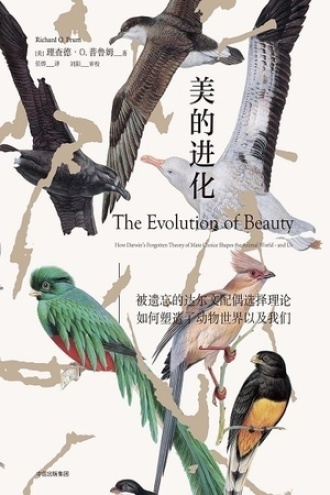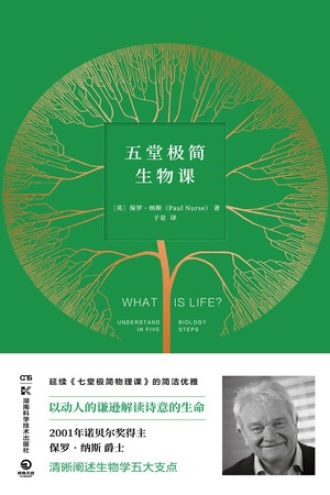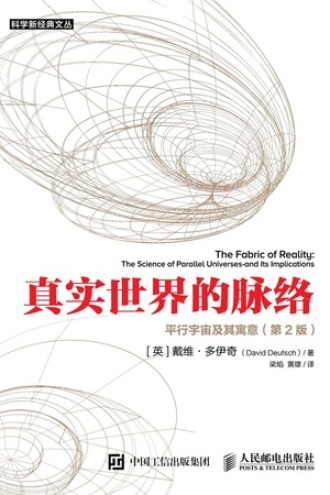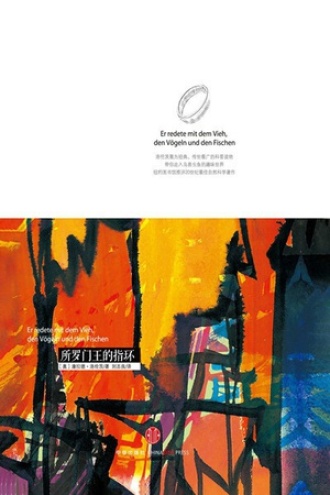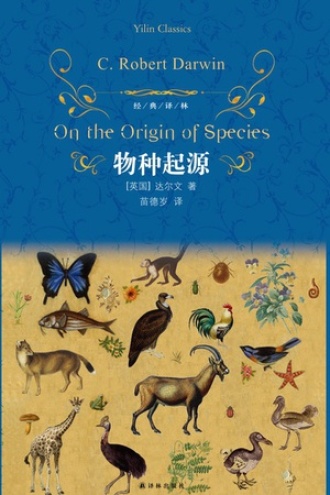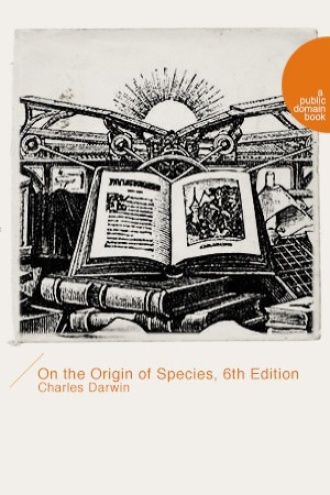
On the Origin of Species(物种起源)
6th Edition(第六版)
作品简介
This landmark work of scientific and philosophical thought sets forth Charles Darwin's pioneering theory of evolution and the interdependence of species. On the Origin of Species had an immediate and profound impact on the literature and ideas of his contemporaries. Without setting out to be controversial, Darwin became quite possibly the most revolutionary writer of the Victorian age, overturning the widely held religious and scientific beliefs of his time.This is a public domain book converted by anonymous volunteers and you may find it for free on the web.This work is respectfully inscribed by the author.
《物种起源》(或物种源始,全称《论处在生存竞争中的物种之起源(源于自然选择或者对偏好种族的保存)》,是达尔文论述生物演化的重要著作,出版于1859年。该书是19世纪最具争议的著作之一,其中的观点大多数为当今的科学界普遍接受。在该书中,达尔文首次提出进化论的观点。他使用自己在1830年代环球科学考察中积累的资料,试图证明物种的演化是通过自然选择(天择)和人择的方式实现的。
达尔文(Charles Robert Darwin,1809-1882)英国博物学家,进化论的奠基人。1809年2月12日,出生于英国医生家庭。1825年至1828年在爱丁大学学医,后进入剑桥大学学习神学。1831年从剑桥大学毕业后,以博物学家的身份乘海军勘探船“贝格尔号(Beagle)”作历时5年(1831-1836)的环球旅行,观察和搜集了动物、植物和地质等方面的大量材料,经过归纳整理和综合分析,形成了生物进行的概念。1859年出版《物种起源(On the Origin of Species)》一书,全面提出以自然选择(Theoty of Natural Selection)为基础的进化学说。该书出版震动当时的学术界,成为生物学史上的一个转折点。自然选择的进化学说对各种唯心的神造论、目的论和物种不变论提出根本性的挑战。使当时生物学各领域已经形成的概念和观念发生根本性的改变。随后达尔文又发表了《动物和植物在家养下的变异(The Variation of Animals and Plants Under Domestication ,1868)》、《人类由来及性的选择(The Descent of Man ,1871)》和《人类和动物的表情(The Expression of the Emotions in Animals and Man,1872)》等书,对人工选择作了系统的叙述,并提出性选择及人类起源的理论,进一步充实了进化学说的内容。
作品目录
An Historical Sketch Of The Progress OfOpinion On The Origin Of Species, Previously To The Publication OfThe First Edition Of This Work
Introduction
Chapter1Variation Under Domestication
1. Causes of Variability
2. Effects Of Habit And Of The Use OrDisuse Of Parts; Correlated Variation; Inheritance
3. Character Of Domestic Varieties;Difficulty Of Distinguishing Between Varieties And Species; OriginOf Domestic Varieties From One Or More Species
4. Breeds Of The Domestic Pigeon, TheirDifferences And Origin
5. Principles Of Selection AncientlyFollowed, And Their Effects
6. Unconscious Selection
7. Circumstances Favourable To Man'sPower Of Selection
Chapter2Variation Under Nature
1.
2. Individual Differences
3. Doubtful Species
4. Wide-Ranging, Much Diffused, AndCommon Species Vary Most
5. Species Of The Larger Genera In EachCountry Vary More Frequently Than The Species Of The SmallerGenera
6. Many Of The Species Included WithinThe Larger Genera Resemble Varieties In Being Very Closely, ButUnequally, Related To Each Other, And In Having RestrictedRanges
7. Summary
Chapter3Struggle For Existence
1.
2. The Term, Struggle For Existence, UsedIn A Large Sense
3. Geometrical Ratio Of Increase
4. Nature Of The Checks To Increase
5. Complex Relations Of All Animals AndPlants To Each Other In The Struggle For Existence
6. Struggle For Life Most Severe BetweenIndividuals And Varieties Of The Same Species
Chapter4Natural Selection; Or The Survival Of The Fittest
1.
2. Sexual Selection
3. Illustrations Of The Action Of NaturalSelection, Or The Survival Of The Fittest
4. On The Intercrossing OfIndividuals
5. Circumstances Favourable For TheProduction Of New Forms Through Natural Selection
6. Extinction Caused By NaturalSelection
7. Divergence Of Character
8. The Probable Effects Of The Action OfNatural Selection Through Divergence Of Character And Extinction,On The Descendants Of A Common Ancestor
9. On The Degree To Which OrganisationTends To Advance
10. Convergence Of Character
11. Summary Of Chapter
Chapter5Laws Of Variation
1.
2. Effects Of The Increased Use AndDisuse Of Parts, As Controlled By Natural Selection
3. Acclimatisation
4. Correlated Variation
5. Compensation And Economy OfGrowth
6. Multiple, Rudimentary, AndLowly-Organised Structures Are Variable
7. A Part Developed In Any Species In AnExtraordinary Degree Or Manner, In Comparison With The Same Part InAllied Species, Tends To Be Highly Variable
8. Specific Characters More Variable ThanGeneric Characters
9. Secondary Sexual CharactersVariable
10. Distinct Species Present AnalogousVariations, So That A Variety Of One Species Often Assumes ACharacter Proper To An Allied Species, Or Reverts To Some Of TheCharacters Of An Early Progenitor
11. Summary
Chapter6Difficulties Of The Theory
1.
2. On The Absence Or Rarity OfTransitional Varieties
3. On The Origin And Transition OfOrganic Beings With Peculiar Habits And Structure
4. Organs Of Extreme Perfection AndComplication
5. Modes Of Transition
6. Special Difficulties Of The Theory OfNatural Selection
7. Organs Of Little Apparent Importance,As Affected By Natural Selection
8. Utilitarian Doctrine, How Far True:Beauty, How Acquired
9. Summary: The Law Of Unity Of Type AndOf The Conditions Of Existence Embraced By The Theory Of NaturalSelection
Chapter7Miscellaneous Objections To The Theory Of Natural Selection
Chapter8Instinct
1.
2. Inherited Changes Of Habit Or InstinctIn Domesticated Animals
3. Special Instincts
4. Instincts Of The Cuckoo
5. Slave-Making Instinct
6. Cell-Making Instinct Of TheHive-Bee
7. Objections To The Theory Of NaturalSelection As Applied To Instincts: Neuter And Sterile Insects
8. Summary
Chapter9Hybridism
1.
2. Degrees Of Sterility
3. Laws Governing The Sterility Of FirstCrosses And Of Hybrids
4. Origin And Causes Of The Sterility OfFirst Crosses And Of Hybrids
5. Reciprocal Dimorphism AndTrimorphism
6. Fertility Of Varieties When Crossed,And Of Their Mongrel Offspring, Not Universal
7. Hybrids And Mongrels Compared,Independently Of Their Fertility
8. Summary Of Chapter
Chapter10On The Imperfection Of The Geological Record
1.
2. On The Lapse Of Time, As Inferred FromThe Rate Of Deposition And Extent Of Denudation
3. On The Poorness Of PalaeontologicalCollections
4. On The Absence Of NumerousIntermediate Varieties In Any Single Formation
5. On The Sudden Appearance Of WholeGroups Of Allied Species
6. On The Sudden Appearance Of Groups OfAllied Species In The Lowest Known Fossiliferous Strata
Chapter11On The Geological Succession Of Organic Beings
1.
2. On Extinction
3. On The Forms Of Life Changing AlmostSimultaneously Throughout The World
4. On The Affinities Of Extinct SpeciesTo Each Other, And To Living Forms
5. On The State Of Development Of AncientCompared With Living Forms
6. On The Succession Of The Same TypesWithin The Same Areas, During The Later Tertiary Periods
7. Summary Of The Preceding And PresentChapters
Chapter12Geographical Distribution
1.
2. Single Centres Of SupposedCreation
3. Means Of Dispersal
4. Dispersal During The GlacialPeriod
5. Alternate Glacial Periods In The NorthAnd South
Chapter13Geographical Distribution--continued
1. Fresh-Water Productions
2. On The Inhabitants Of OceanicIslands
3. Absence Of Batrachians And TerrestrialMammals On Oceanic Islands
4. On The Relations Of The Inhabitants OfIslands To Those Of The Nearest Mainland
5. Summary Of The Last And PresentChapters
Chapter14Mutual Affinities Of Organic Beings: Morphology -- Embryology --Rudimentary Organs
1. Classification
2. Analogical Resemblances
3. On The Nature Of The AffinitiesConnecting Organic Beings
4. Morphology
5. Development And Embryology
6. Rudimentary, Atrophied, And AbortedOrgans
7. Summary
Chapter15Recapitulation And Conclusion
Glossary Of The Principal ScientificTerms Used In The Present Volume
